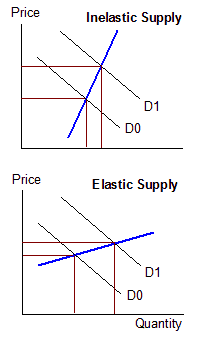There are other challenges to expanding uranium production that relate to the nuclear nature of uranium production and the fact that uranium is produced as a byproduct. Examples of these situations include ERA's world-class Jabiluka deposit, which still faces a challenge to development due to the opposition of a very small number of local traditional owners. Another example is the Olympic Dam expansion, in which case higher uranium prices will be all but ignored in the decision whether to expand capacity; that decision instead lies with the outlook for the copper market.
So just these two projects, taken together, could swing the production side by plus or minus 15 million pounds per year depending on what happens to them in the next five years. Higher uranium prices may help in some indirect sense, but neither project will proceed or be based purely on the uranium market. In the case of Olympic Dam, future uranium production depends not just on the price of uranium, but the price of copper as well. This is what is known as "cross-price elasticity."
Inventory supply is not elastic or evenly negatively related to price -- When it comes to the inventory components of uranium supply, the picture with respect to supply elasticity is far different. The supply of uranium from nuclear weapons is certainly not price elastic. There are other considerations far more important than price when making decisions about blending down weapons material. And, even if governments decide to make more material from weapons available, there are constraints associated with conversion and blending capacity (this is especially true of the United States), so this type of supply cannot respond quickly to a price stimulus even if there were the desire to do so.
|
The supply responsiveness is even worse when it comes to tails material. The supply of uranium from the enrichment of tails is negatively related to price, at least over a certain time period. This is because as the uranium price increases relative to the enrichment price, tails assays drop, and the amount of uranium recovered from the enrichment of tails drops. Of course, this is counteracted to the extent that demand for uranium also drops.
The practical implication of rising prices on HEU-related and tails supplies can be seen with what has happened with HEU feed supplies. While it is true that Russia's repatriation of these supplies is largely a function of increasing uranium requirements in Russia and on the part of countries to which Russia is exporting reactors, it is also likely the case that this relates to the drop-off in the assay of tails. Since HEU must be blended with enriched tails, more enrichment capacity must be devoted to enriching tails material as the assay of this material drops. Since enrichment capacity is fixed over the short run, this means less capacity can be devoted to enriching tails for other purposes, including Russian internal needs and repaying European enrichers which are shipping tails to Russia. Some of the HEU feed that is returned to Russia must be used to compensate for these deficiencies, so supply from this source is going down as prices are going up.
Of course, over the longer term, enrichment capacity can be increased and thus the supply of uranium from tails can increase to the extent that this capacity is devoted to enriching tails. But, the capacity of enrichment available to enrich tails may not increase by very much. This is because the demand for toll enrichment is also increasing--spurred by lower tails assays and the building of new reactors, the movement to higher capacity factors, and the capacity uprates of existing reactors.
|
Summary -- While we have not attempted to measure the supply elasticity of uranium here, it is clearly less than one, not the 2.3-3.3 estimate cited by the University of Chicago study. The problem facing uranium supply is that only a portion of supply responds positively to price. This would not be a problem if production and requirements were in closer balance than they are today, as requirements are not growing that rapidly. However, production must grow strongly to make up for the decreased use of inventories expected in the future, so supply elasticity is very important.
Supply Elasticity
The elasticity of supply measures the response of supply to a given change in price by taking the percentage change in supply and dividing it by the percentage change in price. Ratios of greater than one indicate that supply is elastic; less than one is an indication that it is inelastic. For inelastic supply, changes in demand can have a profound impact on price, as shown in the charts below, while when supply is elastic, changes in demand have much less of an impact on price. When supply is elastic, it reacts quickly to a change in demand; with inelastic supply the response is much slower.

|
Page 1
|